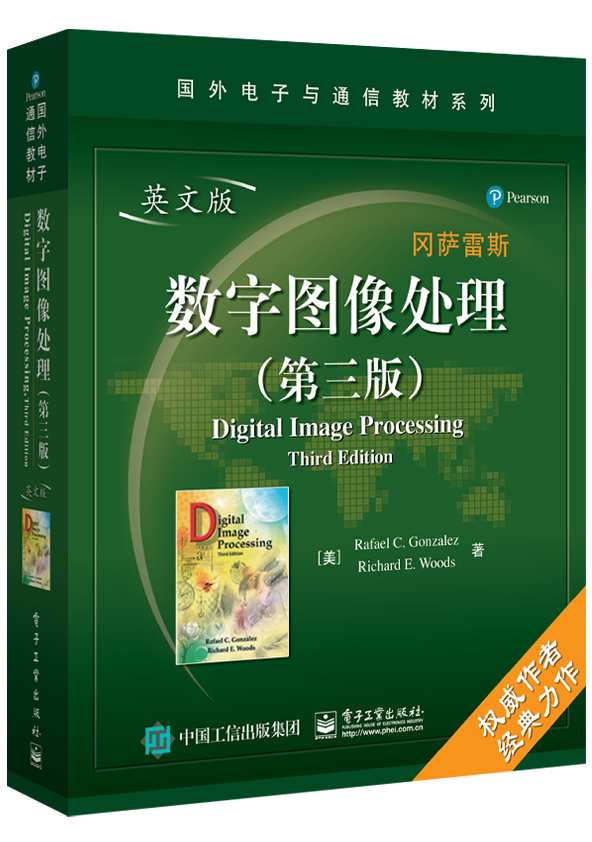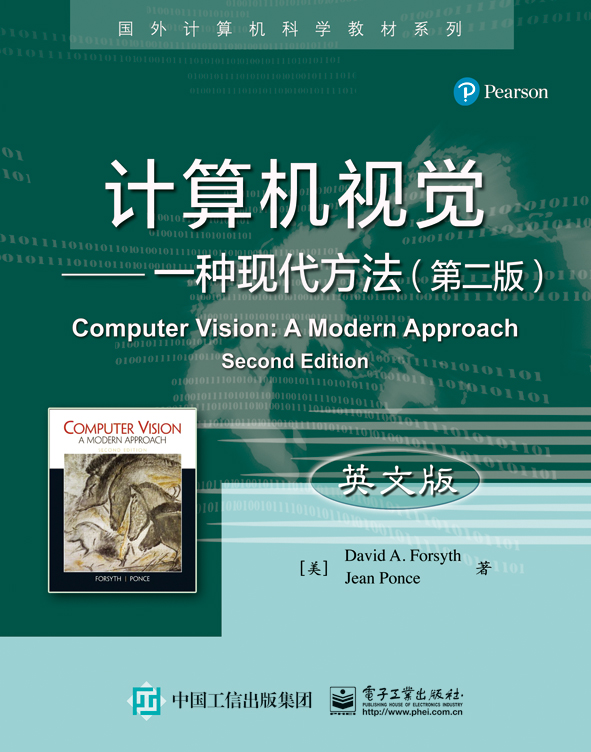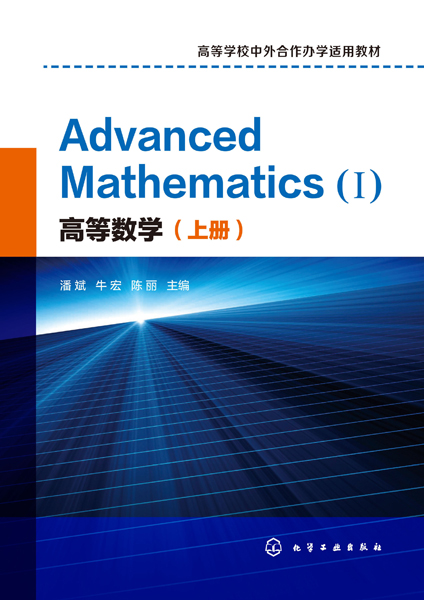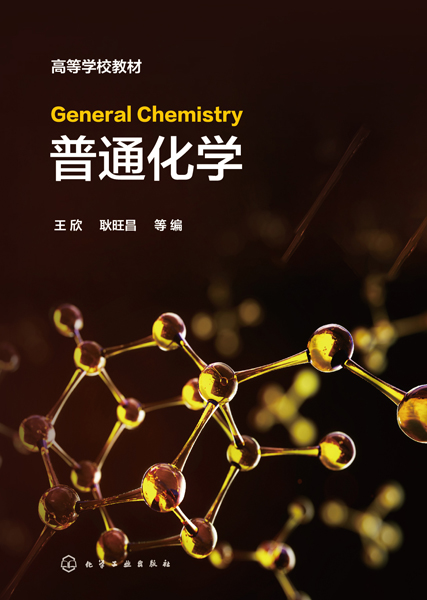国外名校名著——化学工程单元操作
定价:¥99.00
作者: [美]沃伦 L.麦克凯布
出版社:化学工业出版社
- 化学工业出版社
- 9787122031921
- 1版
- 185079
- 60230674-8
- 16开
- 548
- TQ02
- 化工类
- 本科
作者简介
内容简介
本书是在美国著名教材《Unit 0peraUons of Chemical Engineering》的基础上,按照我国化工原理教学大纲要求改编而成的,重点介绍化工单元操作的基本原理、典型设备结构特性及其计算。根据知识点之间的关系,本书在内容编排上力求逻辑严谨,同时兼顾工程实用性。
本书主要内容包括:流体流动、流体输送、非均相体系的流动和非均相混合物的分离、传热、蒸发、扩散原理及相间质量传递、平衡关系和平衡级、气体吸收、蒸馏,浸提和萃取、物料的干燥、板式塔和填料塔的设计等,每章末均附有习题。
本书可作为高等院校化学工程与工艺专业及制药工程、生物工程。过程装备与控制、环境工程、食品与轻化工等相关专业的化工原理双语教材,也可作为外资企业的培训教材,及相关科学研究人员、企业管理者和技术人员的参考书。
本书主要内容包括:流体流动、流体输送、非均相体系的流动和非均相混合物的分离、传热、蒸发、扩散原理及相间质量传递、平衡关系和平衡级、气体吸收、蒸馏,浸提和萃取、物料的干燥、板式塔和填料塔的设计等,每章末均附有习题。
本书可作为高等院校化学工程与工艺专业及制药工程、生物工程。过程装备与控制、环境工程、食品与轻化工等相关专业的化工原理双语教材,也可作为外资企业的培训教材,及相关科学研究人员、企业管理者和技术人员的参考书。
目录
Introduction Definitions and Principles 1
0.1 Unit Operations 1
0.2 Unit Systems 2
0.2.1 Physical Quantities 2
0.2.2 SI Units 3
0.2.3 CGS Units 6
0.2.4 FPS Engineering Units 7
0.2.5 Gas Constant 8
0.2.6 Conversion of Units 9
0.2.7 Units and Equations 10
0.3 Dimensional Analysis 12
Problems 14
Chapter 1 Fluid Flow 15
1.1 Fluid Statics and Its Application 15
1.1.1 Nature of Fluids 15
1.1.2 Hydrostatic Equilibrium 16
1.1.3 Applications of Fluid Statics 17
1.2 Fluid Flow Phenomena 19
1.2.1 Newton’s Law and Viscosity
of Fluids 20
1.2.2 Rheological Properties of Fluids 23
1.2.3 Types of Fluid Flow and Reynolds
Number 25
1.2.4 Boundary Layers 29
1.3 Basic Equations of Fluid Flow 33
1.3.1 Measures of Flow 34
1.3.2 Mass Balance in a Flowing Fluid;
Continuity 35
1.3.3 Overall Energy Balance for Steady-
state Flow System 37
1.3.4 Overall Mechanical Energy Balance
for Steady-state Flow System 39
1.3.5 Discussion on the Overall Mechanical
Energy Balance Equation 40
1.3.6 Macroscopic Momentum Balances 43
1.4 Incompressible Flow in Pipes and Channels 47
1.4.1 Shear Stress and Skin Friction in
Pipes 47
1.4.2 Laminar Flow in Pipes and
Channels 50
1.4.3 Turbulent Flow in Pipes and
Channels 52
1.4.4 Friction from Changes in Velocity or
Direction 56
1.5 Pipe Flow Systems 62
1.5.1 Single Pipes 62
1.5.2 Multiple Pipe Systems 64
1.6 Metering of Fluids 66
1.6.1 Insertion Meters 67
1.6.2 Full-Bore Meters 69
Problems 76
Chapter 2 Transportation of Fluids 82
2.1 Pipe, Fittings, and Valves 82
2.1.1 Pipe and Tubing 82
2.1.2 Valves 86
2.2 Pumps 88
2.2.1 Developed Head 89
2.2.2 Suction Lift and Cavitation of
Pumps 91
2.2.3 Positive-Displacement Pumps 93
2.2.4 Centrifugal Pumps 95
2.2.5 Multistage Centrifugal Pumps 109
2.2.6 Pump Priming 109
2.2.7 Pump Selection 110
2.3 Fans, Blowers, and Compressors 111
2.3.1 Fans 111
2.3.2 Blowers and Compressors 113
2.3.3 Vacuum pumps 118
2.3.4 Comparison of Devices for Moving
Fluids 119
Problems 120
Chapter 3 Heterogeneous Flow and
Separation 124
3.1 Flow Past Immersed Objects 124
3.1.1 Drag and Drag Coefficients 124
3.1.2 Flow through Beds of Solids 128
3.2 Motion of Particles through Fluids 131
3.3 Settling Separation of the Solids from
Gases 138
3.3.1 Gravitational Settling Processes 138
3.3.2 Centrifugal Settling Processes 139
3.4 Filtration Fundamentals 140
3.4.1 Introduction 140
3.4.2 Flow Rate-Pressure Drop
Relationships 145
3.4.3 Filtration Operations-Basic
Equations 148
3.4.4 Constant Pressure Filtration 149
3.4.5 Constant Rate Filtration 151
3.4.6 Constant Rate Followed by Constant
Pressure Operation 151
3.4.7 Vacuum Filtration—Drum Continuous
Filtration 153
3.4.8 Washing Filter Cakes 154
3.5 Introduction to Fluidization 156
Problems 157
Chapter 4 Heat Transfer and Its Applications 161
4.1 Introduction 161
4.2 Heat Transfer by Conduction 163
4.2.1 Basic Law of Conduction 163
4.2.2 Steady-State Conduction 165
4.3 Principles of Heat Flow in Fluids 169
4.3.1 Typical Heat-Exchange Equipment 170
4.3.2 Energy Balances 172
4.3.3 Heat Flux and Heat-Transfer
Coefficients 174
4.4 Heat Transfer to Fluids without Phase
Change 184
4.4.1 Boundary Layers 184
4.4.2 Heat Transfer by Forced Convection
in Laminar Flow 187
4.4.3 Heat Transfer by Forced Convection
in Turbulent Flow 191
4.4.4 Heat Transfer in Transition Region
between Laminar and Turbulent
Flow 196
4.4.5 Heating and Cooling of Fluid in
Forced Convection Outside Tubes 197
4.4.6 Natural Convection 198
4.5 Heat Transfer to Fluids with Phase Change 201
4.5.1 Heat Transfer from Condensing
Vapors 201
4.5.2 Heat Transfer to Boiling Liquids 209
4.6 Radiation Heat Transfer 213
4.6.1 Emission of Radiation 214
4.6.2 Absorption of Radiation by Opaque
Solids 217
4.6.3 Radiation between Surfaces 219
4.7 Heat-Exchange Equipment 224
4.7.1 Shell-and-Tube Heat Exchangers 225
4.7.2 Plate-Type Exchangers 235
4.7.3 Extended-Surface Equipment 237
4.7.4 Condensers 238
Problems 240
Chapter 5 Evaporation 245
5.1 Summarize 245
5.1.1 Single-and Multiple-Effect
Operation 245
5.1.2 Vacuum Evaporation 246
5.1.3 Liquid Characteristics 247
5.2 Evaporation Equipment 247
5.2.1 Circulation Evaporators 248
5.2.2 Once-Through Evaporators 250
5.2.3 Choice of the Evaporators 252
5.3 Single-Effect Evaporation 252
5.3.1 Evaporator Capacity 252
5.3.2 Boiling-Point Elevation and
Dühring’s Rule 253
5.3.3 Effect of Liquid Head and Friction
on Temperature Drop 254
5.4 Calculation Methods for Single-Effect
Evaporator 255
5.4.1 Methods of Operation of ?Evaporators 255
5.4.2 Material Balances for Single-Effect
Evaporator 256
5.4.3 Enthalpy (Heat) Balances for
Single-Effect Evaporator 257
5.4.4 Heat-Transfer Coefficients 259
5.4.5 Single-Effect Calculations 260
5.5 Multiple-Effect Evaporators 261
5.5.1 Methods of Feeding 261
5.5.2 Calculation Methods for
Multiple-Effect Evaporators 262
5.5.3 Effect of Liquid Head and
Boiling-Point Elevation 266
5.5.4 Optimum Number of Effects 267
5.5.5 Multiple-Effect Calculations 267
5.5.6 Vapor Recompression 270
Problems 271
Chapter 6 Principles of Diffusion and
Mass Transfer Between Phases 274
6.1 Theory of Diffusion 275
6.2 Prediction of Diffusivities 283
6.3 Mass-Transfer Theories 289
Problems 295
Chapter 7 Equilibrium Relations and
Equilibrium- Stage Operations 299
7.1 Equilibrium Relations 299
7.1.1 Gas-Liquid Equilibrium 299
7.1.2 Vapor-Liquid Equilibrium Relations 300
7.2 Equilibrium-Stage Operations 305
7.2.1 Equipment for Stage Contacts 305
7.2.2 Principles of Stage Processes 307
Problems 317
Chapter 8 Gas Absorption 321
8.1 Principles of Absorption 321
8.1.1 Material Balances 322
8.1.2 Limiting and Optimum Gas-liquid
Ratio 324
8.1.3 Rate of Absorption in Packed
Towers 327
8.2 Calculation of Tower Height 329
8.2.1 Fundamental Calculation Equation
of Packing Height 329
8.2.2 Number of Transfer Units and Height
of A Transfer Unit 330
8.2.3 Alternate Forms of Transfer
Coefficients 332
8.2.4 Effect of Pressure 335
8.2.5 Temperature Variations in Packed
Towers 335
8.3 Multicomponent Absorption 338
8.4 Desorption or Stripping 339
8.5 Absorption from Rich Gases 342
8.6 Absorption in Plate Columns 344
8.7 Absorption with Chemical Reaction 344
8.8 Cocurrent flow operation 345
Problems 346
Chapter 9 Distillation 348
9.1 Flash Distillation 348
9.2 Simple Batch or Differential Distillation 350
9.3 Simple Steam Distillation 353
9.4 Continuous Distillation with Reflux 354
9.4.1 Action on an Ideal Plate 354
9.4.2 Combination Rectification and
Stripping 355
9.4.3 Material Balances in Plate Columns 357
9.4.4 Number of Ideal Plates;
McCabe-Thiele Method 359
9.4.5 Special Cases for Rectification Using
McCabe-Thiele Method 377
9.4.6 Batch Distillation with Reflux 381
9.5 Azeotropic and Extractive Distillation 382
9.6 Plate Efficiencies 385
Problems 388
Chapter 10 Leaching and Extraction 393
10.1 Leaching 393
10.1.1 Leaching Equipment 393
10.1.2 Principles of Continuous
Countercurrent Leaching 395
10.2 Liquid Extraction 399
10.2.1 Extraction Equipment 400
10.2.2 Principles of Extraction 405
Problems 422
Chapter 11 Drying of Process Materials 426
11.1 Introduction and Methods of Drying 426
11.2 Properties of Moist Air and
Humidity Chart 429
11.2.1 Humidity 429
11.2.2 Humid Heat of an Air–Water Vapor
Mixture 431
11.2.3 Humid Volume of an Air–Water
Vapor Mixture 432
11.2.4 Total Enthalpy of an Air–Water
Vapor Mixture 432
11.2.5 Dew Point of an Air–Water Vapor
Mixture 433
11.2.6 Adiabatic Saturation Temperatures 433
11.2.7 Dry-Bulb Temperature and
Wet-Bulb Temperature 434
11.2.8 Humidity Chart 437
11.2.9 Measurement of Humidity 441
11.3 Principles of Drying 442
11.3.1 Temperature patterns in dryers 442
11.3.2 Phase Equilibria 443
11.3.3 Data of Equilibrium Moisture
Content for Inorganic and
Biological Materials 446
11.4 Rate-of-Drying Curves 447
11.4.1 Method Using Experimental
Drying Curve 447
11.4.2 Rate of Drying Curves for
Constant-Drying Conditions 448
11.4.3 Critical Moisture Content 449
11.4.4 Drying in the Constant-Rate
Period 450
11.4.5 Drying in the Falling-Rate Period 450
11.4.6 Moisture Movements in Solids During Drying in the Falling-Rate Period 451
11.4.7 Effect of Shrinkage 452
11.5 Calculation Methods for Constant-Rate
Drying Period 452
11.5.1 Method Using Experimental
Drying Curve 452
11.5.2 Method Using Rate-of-Drying Curve
for Constant-Rate Period 453
11.5.3 Method Using Predicted Transfer
Coefficients for Constant-Rate
Period 453
11.5.4 Effect of Process Variables on
Constant-Rate Period 456
11.6 Calculation Methods for Falling-rate
Drying Period 457
11.6.1 Method Using Numerical
Integration 457
11.6.2 Calculation Methods for Special
Cases in Falling-Rate Region 458
11.7 Equations for Various Types of Dryers 459
11.7.1 Through-Circulation Drying in
Packed Beds 459
11.7.2 Tray Drying with Varying Air
Conditions 463
11.7.3 Material and Heat Balances for
Continuous Dryers 464
11.7.4 Continuous Countercurrent Drying 466
11.8 Drying Equipment 468
11.8.1 Dryers for Solids and Pastes 469
11.8.2 Dryers for Solutions and Slurries 474
11.8.3 Selection of Drying Equipment 477
Problems 478
Chapter 12 Tray and Packed Tower Design 483
12.1 Packed Tower Design 483
12.1.1 Packed Tower and Packings 483
12.1.2 Fluid Mechanics of Packed Tower 486
12.1.3 Calculations of Packed Tower 491
12.2 Plate Tower Design 493
12.2.1 Introduction 493
12.2.2 Fluid Mechanics of Plate Columns 495
12.2.3 Plate Efficiencies 504
Appendix 511
1 Unit Conversion 511
2 Dimensionless Groups 512
3 Standard Steel Pipe 513
4 Condenser and Heat-Exchanger Data 514
5 Properties of Liquid Water 518
6 Properties of Saturated Steam and Water 518
7 Viscosities of Gases 520
8 Viscosities of Liquids 522
9 Thermal Conductivities of Metals 524
10 Thermal Conductivities of Various Solids
and Insulating Materials 524
11 Thermal Conductivities of Gases and
Vapors 526
12 Thermal Conductivities of Liquids Other
Than Water 526
13 Specific Heats of Gases 527
14 Specific Heats of Liquids 529
15 Prandtl Numbers for Gases at 1 atm and
100℃ 531
16 Prandtl Numbers for Liquids 531
17 Diffusivities and Schmidt Numbers for
Gases in Air at 0℃ and 1 atm 531
18 Collision Integral and Lennard-Jones
Force Constants 532
19 Equilibrium Data for Ethanol-Water System
at 101.325 kPa 533
20 Henry’s Law Constants for Gases in
Water 534
21 Partial Pressure p of SO2 in The Gas in
Equilibrium with The Mole Fraction x of
SO2 in The Liquid at 20℃ 535
22 Boiling Point for Inorganic Solution at
1 atm 535
0.1 Unit Operations 1
0.2 Unit Systems 2
0.2.1 Physical Quantities 2
0.2.2 SI Units 3
0.2.3 CGS Units 6
0.2.4 FPS Engineering Units 7
0.2.5 Gas Constant 8
0.2.6 Conversion of Units 9
0.2.7 Units and Equations 10
0.3 Dimensional Analysis 12
Problems 14
Chapter 1 Fluid Flow 15
1.1 Fluid Statics and Its Application 15
1.1.1 Nature of Fluids 15
1.1.2 Hydrostatic Equilibrium 16
1.1.3 Applications of Fluid Statics 17
1.2 Fluid Flow Phenomena 19
1.2.1 Newton’s Law and Viscosity
of Fluids 20
1.2.2 Rheological Properties of Fluids 23
1.2.3 Types of Fluid Flow and Reynolds
Number 25
1.2.4 Boundary Layers 29
1.3 Basic Equations of Fluid Flow 33
1.3.1 Measures of Flow 34
1.3.2 Mass Balance in a Flowing Fluid;
Continuity 35
1.3.3 Overall Energy Balance for Steady-
state Flow System 37
1.3.4 Overall Mechanical Energy Balance
for Steady-state Flow System 39
1.3.5 Discussion on the Overall Mechanical
Energy Balance Equation 40
1.3.6 Macroscopic Momentum Balances 43
1.4 Incompressible Flow in Pipes and Channels 47
1.4.1 Shear Stress and Skin Friction in
Pipes 47
1.4.2 Laminar Flow in Pipes and
Channels 50
1.4.3 Turbulent Flow in Pipes and
Channels 52
1.4.4 Friction from Changes in Velocity or
Direction 56
1.5 Pipe Flow Systems 62
1.5.1 Single Pipes 62
1.5.2 Multiple Pipe Systems 64
1.6 Metering of Fluids 66
1.6.1 Insertion Meters 67
1.6.2 Full-Bore Meters 69
Problems 76
Chapter 2 Transportation of Fluids 82
2.1 Pipe, Fittings, and Valves 82
2.1.1 Pipe and Tubing 82
2.1.2 Valves 86
2.2 Pumps 88
2.2.1 Developed Head 89
2.2.2 Suction Lift and Cavitation of
Pumps 91
2.2.3 Positive-Displacement Pumps 93
2.2.4 Centrifugal Pumps 95
2.2.5 Multistage Centrifugal Pumps 109
2.2.6 Pump Priming 109
2.2.7 Pump Selection 110
2.3 Fans, Blowers, and Compressors 111
2.3.1 Fans 111
2.3.2 Blowers and Compressors 113
2.3.3 Vacuum pumps 118
2.3.4 Comparison of Devices for Moving
Fluids 119
Problems 120
Chapter 3 Heterogeneous Flow and
Separation 124
3.1 Flow Past Immersed Objects 124
3.1.1 Drag and Drag Coefficients 124
3.1.2 Flow through Beds of Solids 128
3.2 Motion of Particles through Fluids 131
3.3 Settling Separation of the Solids from
Gases 138
3.3.1 Gravitational Settling Processes 138
3.3.2 Centrifugal Settling Processes 139
3.4 Filtration Fundamentals 140
3.4.1 Introduction 140
3.4.2 Flow Rate-Pressure Drop
Relationships 145
3.4.3 Filtration Operations-Basic
Equations 148
3.4.4 Constant Pressure Filtration 149
3.4.5 Constant Rate Filtration 151
3.4.6 Constant Rate Followed by Constant
Pressure Operation 151
3.4.7 Vacuum Filtration—Drum Continuous
Filtration 153
3.4.8 Washing Filter Cakes 154
3.5 Introduction to Fluidization 156
Problems 157
Chapter 4 Heat Transfer and Its Applications 161
4.1 Introduction 161
4.2 Heat Transfer by Conduction 163
4.2.1 Basic Law of Conduction 163
4.2.2 Steady-State Conduction 165
4.3 Principles of Heat Flow in Fluids 169
4.3.1 Typical Heat-Exchange Equipment 170
4.3.2 Energy Balances 172
4.3.3 Heat Flux and Heat-Transfer
Coefficients 174
4.4 Heat Transfer to Fluids without Phase
Change 184
4.4.1 Boundary Layers 184
4.4.2 Heat Transfer by Forced Convection
in Laminar Flow 187
4.4.3 Heat Transfer by Forced Convection
in Turbulent Flow 191
4.4.4 Heat Transfer in Transition Region
between Laminar and Turbulent
Flow 196
4.4.5 Heating and Cooling of Fluid in
Forced Convection Outside Tubes 197
4.4.6 Natural Convection 198
4.5 Heat Transfer to Fluids with Phase Change 201
4.5.1 Heat Transfer from Condensing
Vapors 201
4.5.2 Heat Transfer to Boiling Liquids 209
4.6 Radiation Heat Transfer 213
4.6.1 Emission of Radiation 214
4.6.2 Absorption of Radiation by Opaque
Solids 217
4.6.3 Radiation between Surfaces 219
4.7 Heat-Exchange Equipment 224
4.7.1 Shell-and-Tube Heat Exchangers 225
4.7.2 Plate-Type Exchangers 235
4.7.3 Extended-Surface Equipment 237
4.7.4 Condensers 238
Problems 240
Chapter 5 Evaporation 245
5.1 Summarize 245
5.1.1 Single-and Multiple-Effect
Operation 245
5.1.2 Vacuum Evaporation 246
5.1.3 Liquid Characteristics 247
5.2 Evaporation Equipment 247
5.2.1 Circulation Evaporators 248
5.2.2 Once-Through Evaporators 250
5.2.3 Choice of the Evaporators 252
5.3 Single-Effect Evaporation 252
5.3.1 Evaporator Capacity 252
5.3.2 Boiling-Point Elevation and
Dühring’s Rule 253
5.3.3 Effect of Liquid Head and Friction
on Temperature Drop 254
5.4 Calculation Methods for Single-Effect
Evaporator 255
5.4.1 Methods of Operation of ?Evaporators 255
5.4.2 Material Balances for Single-Effect
Evaporator 256
5.4.3 Enthalpy (Heat) Balances for
Single-Effect Evaporator 257
5.4.4 Heat-Transfer Coefficients 259
5.4.5 Single-Effect Calculations 260
5.5 Multiple-Effect Evaporators 261
5.5.1 Methods of Feeding 261
5.5.2 Calculation Methods for
Multiple-Effect Evaporators 262
5.5.3 Effect of Liquid Head and
Boiling-Point Elevation 266
5.5.4 Optimum Number of Effects 267
5.5.5 Multiple-Effect Calculations 267
5.5.6 Vapor Recompression 270
Problems 271
Chapter 6 Principles of Diffusion and
Mass Transfer Between Phases 274
6.1 Theory of Diffusion 275
6.2 Prediction of Diffusivities 283
6.3 Mass-Transfer Theories 289
Problems 295
Chapter 7 Equilibrium Relations and
Equilibrium- Stage Operations 299
7.1 Equilibrium Relations 299
7.1.1 Gas-Liquid Equilibrium 299
7.1.2 Vapor-Liquid Equilibrium Relations 300
7.2 Equilibrium-Stage Operations 305
7.2.1 Equipment for Stage Contacts 305
7.2.2 Principles of Stage Processes 307
Problems 317
Chapter 8 Gas Absorption 321
8.1 Principles of Absorption 321
8.1.1 Material Balances 322
8.1.2 Limiting and Optimum Gas-liquid
Ratio 324
8.1.3 Rate of Absorption in Packed
Towers 327
8.2 Calculation of Tower Height 329
8.2.1 Fundamental Calculation Equation
of Packing Height 329
8.2.2 Number of Transfer Units and Height
of A Transfer Unit 330
8.2.3 Alternate Forms of Transfer
Coefficients 332
8.2.4 Effect of Pressure 335
8.2.5 Temperature Variations in Packed
Towers 335
8.3 Multicomponent Absorption 338
8.4 Desorption or Stripping 339
8.5 Absorption from Rich Gases 342
8.6 Absorption in Plate Columns 344
8.7 Absorption with Chemical Reaction 344
8.8 Cocurrent flow operation 345
Problems 346
Chapter 9 Distillation 348
9.1 Flash Distillation 348
9.2 Simple Batch or Differential Distillation 350
9.3 Simple Steam Distillation 353
9.4 Continuous Distillation with Reflux 354
9.4.1 Action on an Ideal Plate 354
9.4.2 Combination Rectification and
Stripping 355
9.4.3 Material Balances in Plate Columns 357
9.4.4 Number of Ideal Plates;
McCabe-Thiele Method 359
9.4.5 Special Cases for Rectification Using
McCabe-Thiele Method 377
9.4.6 Batch Distillation with Reflux 381
9.5 Azeotropic and Extractive Distillation 382
9.6 Plate Efficiencies 385
Problems 388
Chapter 10 Leaching and Extraction 393
10.1 Leaching 393
10.1.1 Leaching Equipment 393
10.1.2 Principles of Continuous
Countercurrent Leaching 395
10.2 Liquid Extraction 399
10.2.1 Extraction Equipment 400
10.2.2 Principles of Extraction 405
Problems 422
Chapter 11 Drying of Process Materials 426
11.1 Introduction and Methods of Drying 426
11.2 Properties of Moist Air and
Humidity Chart 429
11.2.1 Humidity 429
11.2.2 Humid Heat of an Air–Water Vapor
Mixture 431
11.2.3 Humid Volume of an Air–Water
Vapor Mixture 432
11.2.4 Total Enthalpy of an Air–Water
Vapor Mixture 432
11.2.5 Dew Point of an Air–Water Vapor
Mixture 433
11.2.6 Adiabatic Saturation Temperatures 433
11.2.7 Dry-Bulb Temperature and
Wet-Bulb Temperature 434
11.2.8 Humidity Chart 437
11.2.9 Measurement of Humidity 441
11.3 Principles of Drying 442
11.3.1 Temperature patterns in dryers 442
11.3.2 Phase Equilibria 443
11.3.3 Data of Equilibrium Moisture
Content for Inorganic and
Biological Materials 446
11.4 Rate-of-Drying Curves 447
11.4.1 Method Using Experimental
Drying Curve 447
11.4.2 Rate of Drying Curves for
Constant-Drying Conditions 448
11.4.3 Critical Moisture Content 449
11.4.4 Drying in the Constant-Rate
Period 450
11.4.5 Drying in the Falling-Rate Period 450
11.4.6 Moisture Movements in Solids During Drying in the Falling-Rate Period 451
11.4.7 Effect of Shrinkage 452
11.5 Calculation Methods for Constant-Rate
Drying Period 452
11.5.1 Method Using Experimental
Drying Curve 452
11.5.2 Method Using Rate-of-Drying Curve
for Constant-Rate Period 453
11.5.3 Method Using Predicted Transfer
Coefficients for Constant-Rate
Period 453
11.5.4 Effect of Process Variables on
Constant-Rate Period 456
11.6 Calculation Methods for Falling-rate
Drying Period 457
11.6.1 Method Using Numerical
Integration 457
11.6.2 Calculation Methods for Special
Cases in Falling-Rate Region 458
11.7 Equations for Various Types of Dryers 459
11.7.1 Through-Circulation Drying in
Packed Beds 459
11.7.2 Tray Drying with Varying Air
Conditions 463
11.7.3 Material and Heat Balances for
Continuous Dryers 464
11.7.4 Continuous Countercurrent Drying 466
11.8 Drying Equipment 468
11.8.1 Dryers for Solids and Pastes 469
11.8.2 Dryers for Solutions and Slurries 474
11.8.3 Selection of Drying Equipment 477
Problems 478
Chapter 12 Tray and Packed Tower Design 483
12.1 Packed Tower Design 483
12.1.1 Packed Tower and Packings 483
12.1.2 Fluid Mechanics of Packed Tower 486
12.1.3 Calculations of Packed Tower 491
12.2 Plate Tower Design 493
12.2.1 Introduction 493
12.2.2 Fluid Mechanics of Plate Columns 495
12.2.3 Plate Efficiencies 504
Appendix 511
1 Unit Conversion 511
2 Dimensionless Groups 512
3 Standard Steel Pipe 513
4 Condenser and Heat-Exchanger Data 514
5 Properties of Liquid Water 518
6 Properties of Saturated Steam and Water 518
7 Viscosities of Gases 520
8 Viscosities of Liquids 522
9 Thermal Conductivities of Metals 524
10 Thermal Conductivities of Various Solids
and Insulating Materials 524
11 Thermal Conductivities of Gases and
Vapors 526
12 Thermal Conductivities of Liquids Other
Than Water 526
13 Specific Heats of Gases 527
14 Specific Heats of Liquids 529
15 Prandtl Numbers for Gases at 1 atm and
100℃ 531
16 Prandtl Numbers for Liquids 531
17 Diffusivities and Schmidt Numbers for
Gases in Air at 0℃ and 1 atm 531
18 Collision Integral and Lennard-Jones
Force Constants 532
19 Equilibrium Data for Ethanol-Water System
at 101.325 kPa 533
20 Henry’s Law Constants for Gases in
Water 534
21 Partial Pressure p of SO2 in The Gas in
Equilibrium with The Mole Fraction x of
SO2 in The Liquid at 20℃ 535
22 Boiling Point for Inorganic Solution at
1 atm 535










